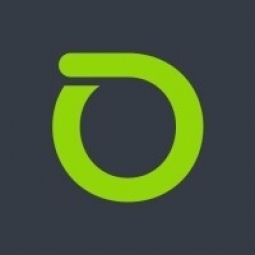公司规模
Large Corporate
地区
- America
国家
- United States
产品
- NETSCOUT® Certified InfiniStreamNG® software appliances
- nGeniusONE® Service Assurance platform
技术栈
- Cisco VoIP
- Private Cloud
实施规模
- Enterprise-wide Deployment
影响指标
- Productivity Improvements
- Customer Satisfaction
技术
- 基础设施即服务 (IaaS) - 私有云
适用行业
- 金融与保险
适用功能
- 商业运营
服务
- 云规划/设计/实施服务
- 网络安全服务
关于客户
该客户是一家大型金融服务领导者,其业务包括个人和商业银行、交易和投资工具,数百万客户都在使用。该银行还紧跟市场发展步伐,向在线信贷和数字交易平台迈进。区域运营对银行的成功仍然至关重要,银行雇用了 100,000 多名专业人员,为广泛的分支机构、ATM 和金融服务网络中的本地客户提供支持。在管理整个环境中的性能时,该银行的网络运营 (NetOps) 团队长期以来一直依赖供应商提供的网络性能监控和可视性工具来进行事后故障排除。
挑战
该银行正在经历多项数字化转型,这促使其需要提高服务边缘可视性和主动监控能力。该银行将部分本地数据中心运营转移到第三方私有云环境,引发了人们对供应商是否遵守其服务水平协议 (SLA) 的担忧。该银行的思科 IP 语音 (VoIP) 环境已经迁移到私有云,语音和视频性能方面的 IT 专家同样受到新私有云环境中盲点的阻碍。该银行越来越多地使用基于 Web 的平台,这促使其需要实时、一致地可视化和监控这些 Web 服务,而不是仅仅依靠在发生事件时进行故障排除。
解决方案
IT 运营部门努力寻找下一代方法,最终他们选择了 NETSCOUT 解决方案,该解决方案提供了 nGeniusONE® 服务保证平台,该平台可提供银行融合业务服务环境的实时快照,并可查看私有云、思科 VoIP、Web 服务、桌面和应用程序服务,支持银行向客户和员工提供服务。基于软件的方法可满足他们的服务边缘可视性需求,经认证的 InfiniStreamNG (ISNG) 设备可支持与银行 100GB 网络速度和扩展数据包存储可用性相关的多项战略要求。NETSCOUT 认证的 ISNG 设备部署在关键服务边缘位置,以捕获网络数据包流量,然后将这些数据包实时转换为 nGeniusONE 用于云、VoIP、Web 服务、应用程序监控和分析的 NETSCOUT 智能数据。
运营影响

Case Study missing?
Start adding your own!
Register with your work email and create a new case study profile for your business.
相关案例.

Case Study
Real-time In-vehicle Monitoring
The telematic solution provides this vital premium-adjusting information. The solution also helps detect and deter vehicle or trailer theft – as soon as a theft occurs, monitoring personnel can alert the appropriate authorities, providing an exact location.“With more and more insurance companies and major fleet operators interested in monitoring driver behaviour on the grounds of road safety, efficient logistics and costs, the market for this type of device and associated e-business services is growing rapidly within Italy and the rest of Europe,” says Franco.“The insurance companies are especially interested in the pay-per-use and pay-as-you-drive applications while other organisations employ the technology for road user charging.”“One million vehicles in Italy currently carry such devices and forecasts indicate that the European market will increase tenfold by 2014.However, for our technology to work effectively, we needed a highly reliable wireless data network to carry the information between the vehicles and monitoring stations.”

Case Study
Safety First with Folksam
The competitiveness of the car insurance market is driving UBI growth as a means for insurance companies to differentiate their customer propositions as well as improving operational efficiency. An insurance model - usage-based insurance ("UBI") - offers possibilities for insurers to do more efficient market segmentation and accurate risk assessment and pricing. Insurers require an IoT solution for the purpose of data collection and performance analysis

Case Study
Smooth Transition to Energy Savings
The building was equipped with four end-of-life Trane water cooled chillers, located in the basement. Johnson Controls installed four York water cooled centrifugal chillers with unit mounted variable speed drives and a total installed cooling capacity of 6,8 MW. Each chiller has a capacity of 1,6 MW (variable to 1.9MW depending upon condenser water temperatures). Johnson Controls needed to design the equipment in such way that it would fit the dimensional constraints of the existing plant area and plant access route but also the specific performance requirements of the client. Morgan Stanley required the chiller plant to match the building load profile, turn down to match the low load requirement when needed and provide an improvement in the Energy Efficiency Ratio across the entire operating range. Other requirements were a reduction in the chiller noise level to improve the working environment in the plant room and a wide operating envelope coupled with intelligent controls to allow possible variation in both flow rate and temperature. The latter was needed to leverage increased capacity from a reduced number of machines during the different installation phases and allow future enhancement to a variable primary flow system.

Case Study
Automated Pallet Labeling Solution for SPR Packaging
SPR Packaging, an American supplier of packaging solutions, was in search of an automated pallet labeling solution that could meet their immediate and future needs. They aimed to equip their lines with automatic printer applicators, but also required a solution that could interface with their accounting software. The challenge was to find a system that could read a 2D code on pallets at the stretch wrapper, track the pallet, and flag any pallets with unread barcodes for inspection. The pallets could be single or double stacked, and the system needed to be able to differentiate between the two. SPR Packaging sought a system integrator with extensive experience in advanced printing and tracking solutions to provide a complete traceability system.

Case Study
Transforming insurance pricing while improving driver safety
The Internet of Things (IoT) is revolutionizing the car insurance industry on a scale not seen since the introduction of the car itself. For decades, premiums have been calculated using proxy-based risk assessment models and historical data. Today, a growing number of innovative companies such as Quebec-based Industrielle Alliance are moving to usage-based insurance (UBI) models, driven by the advancement of telematics technologies and smart tracking devices.
Case Study
Enhancing Security and Compliance in Remitly's Global Money Transfer Service with Fastly
Remitly, an online remittance service, was faced with the challenge of securing its proprietary global transfer network. The company needed a security solution that could meet PCI requirements and protect customers' sensitive transactions through its mobile application. The solution had to be capable of defending against new and emerging attack types without impacting performance. Remitly also had to deal with irregular traffic patterns, such as a sudden spike in account transfers from a small network segment on the Pacific coastline of South America. The company needed to determine in real time whether such traffic indicated an attack or valid requests. A traditional web application firewall (WAF) would not be able to distinguish this traffic, potentially leading to customer frustration if the IP was blacklisted.







